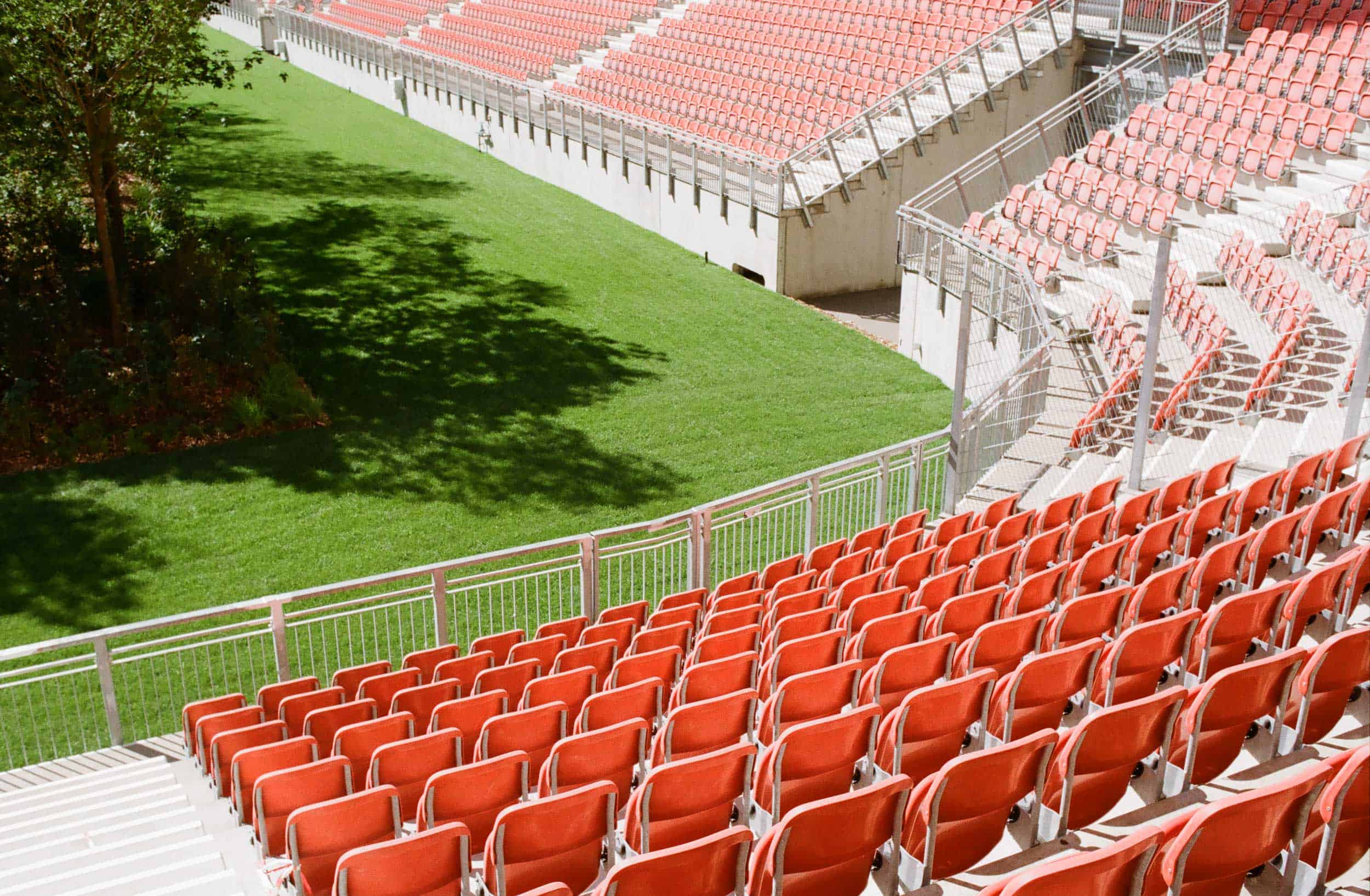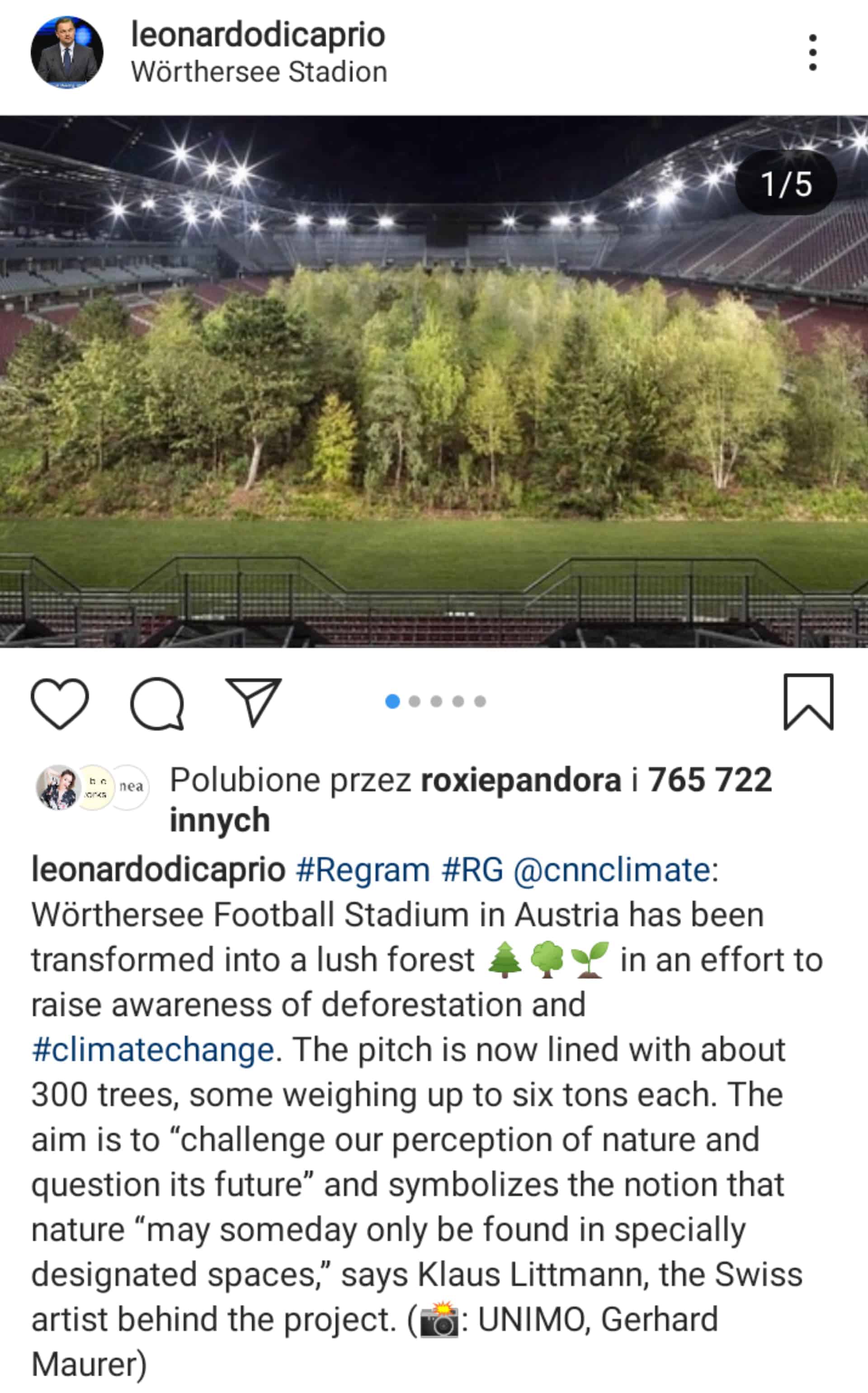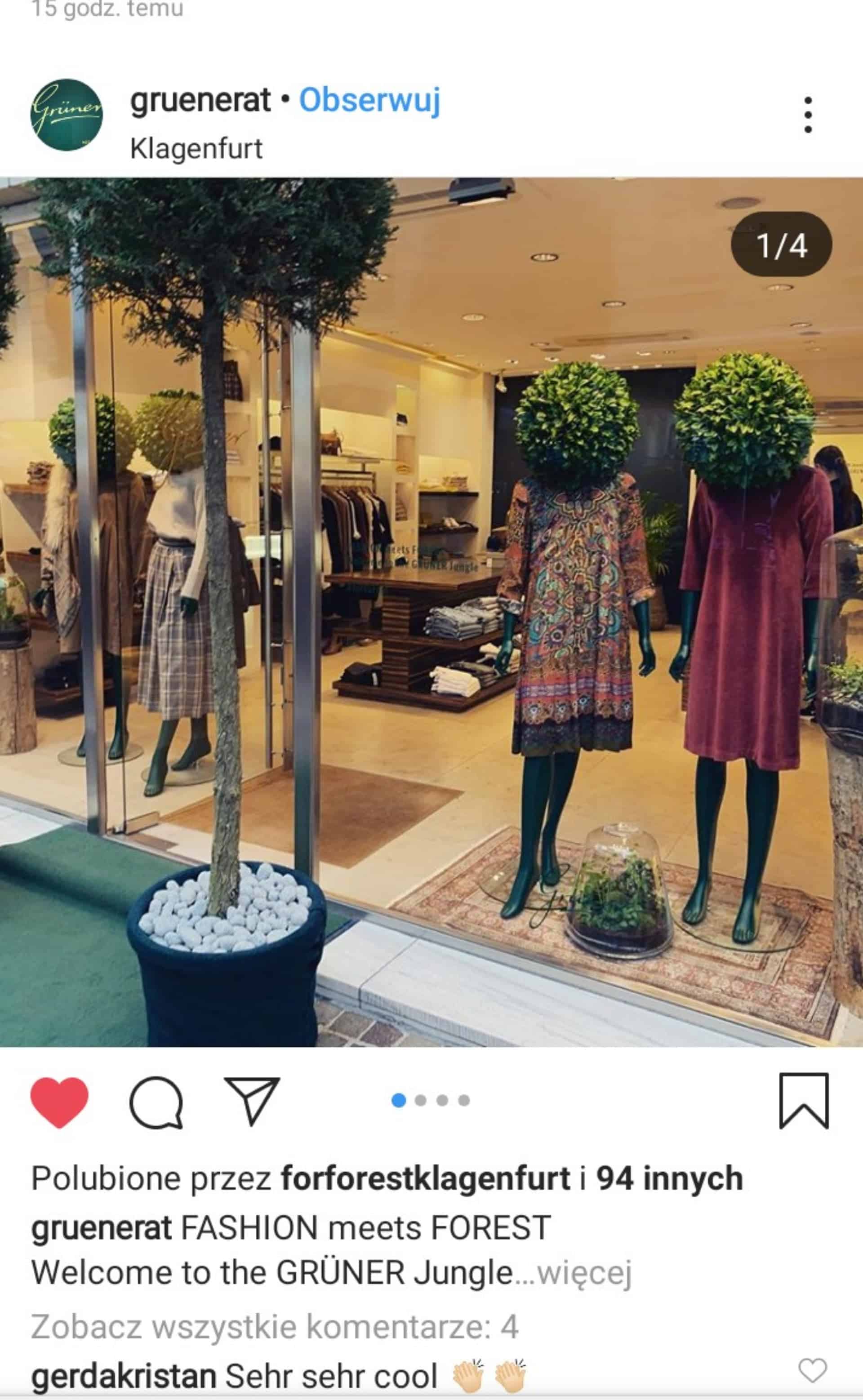Since 8 September 2019 the audience has an opportunity to see the biggest temporary art intervention in Austria, entitled “FOR FOREST – The Unending Attraction of Nature”. Swiss artist, Klaus Littmann, is the one who came up with the idea of this intriguing project. His inspiration came from a drawing by Max Peintner, who is an Austrian artist. Assisted by Enzo Enea, a renowned landscape architect, Littmann masterfully combined art, nature and architecture. Fruitful cooperation of the duo gave an unbelievable result – in the enormous Wörthersee football stadium in Klagenfurt mixed forest is growing that has as much as three hundred living trees. Visitors have almost two months to admire this extraordinary and riveting manifestation of nature, which will carefully be replanted in a nearby location as soon as the intervention finishes.

Portrait of Klaus Littmann, 2019, Photo creat Emmanuel Fradin, Courtesy of For Forest
SURREALIST IMAGES TRANSFERRED INTO REALITY
The destruction of nature and the environment
When Max Peintner (1937) worked on his “The Unending Attraction of Nature” (1970/71) drawing he could not have assumed that his vision will become a reality some time in the future. What he probably strived for was merely preserving the unconventional vision by depicting it on paper. The drawing may have been shocking for the audience 50 years ago, but nowadays it is astoundingly relevant. Today we are thinking more and more about our destructive relationship with the natural environment and try to make it progress in a more suitable direction. The futuristic image by Peintner is by no means absurd anymore, it may, however, still stir up emotions of certain viewers, especially football fans. Everyone expects to see football players on a pitch but it is not what the audience sees in this drawing. Contrary to their expectations, they see forest in the middle of a stadium, as surreal as it may sound.

Image credit Max Peintner, The Unending Attraction of Nature, pencil drawing, 197071, hand-coloured by Klaus Littmann in 2018
Max Peintner who drew “The Unending Attraction of Nature” holds an engineering degree and a degree in architecture. He is an iconic figure of the Austrian environmental movement who became popular in the 1970s thanks to his works that criticized the modern way of living. He is keenly interested in what we are putting our planet through. He was shell-shocked by the Chernobyl disaster and his feelings manifested themselves clearly in poetic and philosophical visions. The drawing we are talking about is not very unique among all of Peintner’s works. Futuristic visions were what characterized him from the early beginnings of his artistic activity. A perfect example here is his series of drawings entitled “Contributions to the Future. Critics of Technology and Civilization under the Guise of Utopia”, which he created at the early stage of his career. The common features of Peintner’s drawings are undoubtedly anxiety and melancholy, just like we see them in the paintings by Giorgio de Chirico. Futuristic visions is another aspect which combines all these drawings into a coherent unit. Nonetheless, we have to bear in mind that this topic is by no means the only one the artist focuses on.
GESAMTKUNSTWERK CREATED BY A STUDENT OF JOSEPH BEUYS
A soccer ball in a gallery and forest growing in a football stadium
The vision of Max Peintner materialized in real world thanks to Klaus Littmann (1951) who could not stop thinking how to make “The Unending Attraction of Nature” a reality since the moment he saw the drawing. The vision accompanied Klaus Littmann for thirty years and became an enormous artistic challenge. Nearly fifty years passed since the drawing was made until what Max Peintner imagined came into being. The project we are discussing is the biggest art intervention in Austria and, at the same time, it is the biggest project Littmann had ever carried out.
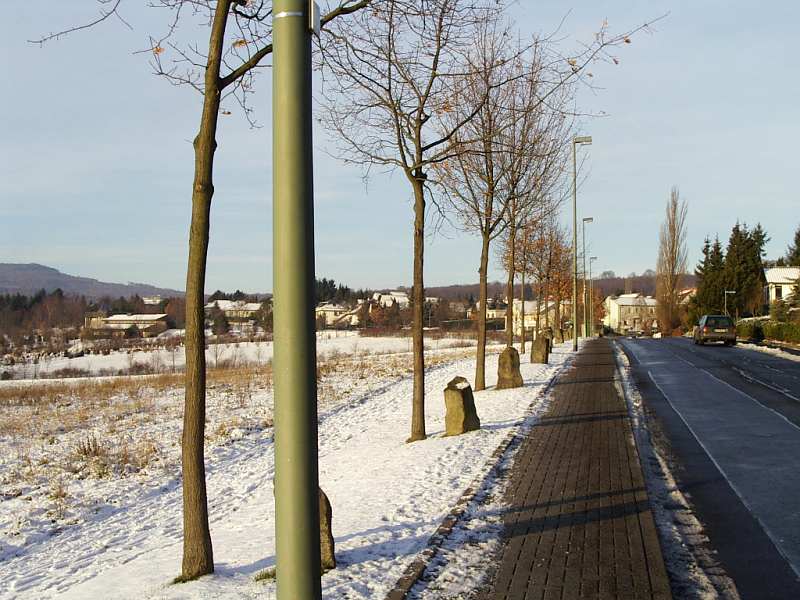
Kassel, Joseph Beuys, 7000 Eichen – Stadtverwaldung statt Stadtverwaltung
It was not a coincidence that Klaus Littmann was the artist who came up with this fascinating idea. Undoubtedly, the ability to convince others to go along with his initiatives is a very strong skill of this curator, gallery owner and artist specializing in art interventions in the public space. The skill must have come handy while working on such a big and expensive project. Klaus Littmann understands art in a very unique way. Since the very young age he has been fascinated with works by Kurt Schwitters, the author of an individual utopia, who tried to find new ways of artistic expression. Littmann was also a student of Joseph Beuys (1921) at the Academy of Fine Arts in Düsseldorf. He therefore is perfectly familiar with works and achievements of his professor and understands the concept of social sculpture, whose underlying idea is activity and provoking the society. Nevertheless, Littmann’s work is quite far away from this concept. It is a dynamic process, fully experienced through what is being done in connection with the project.
“FOR FOREST – The Unending Attraction of Nature” is not the only project by the Swiss artist related to football. One of his previous engrossing projects was prepared together with Werner Jehle and entitled “Fussball in der Vitrine” (Basel, 1982). Another famous project by Littmann whose topic was related to this sports discipline was “Faces of Football” (Vigo & Vitoria, 2008). These projects clearly show that the artist is truly interested in everyday life and a cultural phenomenon.
CREATIVE DIALOGUE WITH NATURE
Social sculpture and experiences in the realm of aesthetics
When the current project is being discussed, other works that served as attempts to establish a creative dialogue with nature are referred to as well. An example of such work is “7000 Oaks” (1982, Kassel) by Joseph Beuys, a representative of conceptual art and a performer. This work is also an example of social sculpture. The artist proposed to plant 7000 oaks in the city of Kassel. Each of these oaks had one basaltic rock assigned, which were arranged in a single pile. The rocks were put in front of Fridericianum, the pile getting smaller each time an oak was planted. This project was deemed to be an attempt at urban greenery restoration and later on it spread onto other cities in different parts of the world. “7000 Oaks” was meant to be just the initial stage of tree planting campaign, thanks to which social and environmental changes were to be triggered off.

Modell for Forest, Die ungebrochene Anziehungskraft der Natur, (c)Johann Puch
Another nature-related project, mentioned by Klaus Littmann himself is “Wrapped Trees” by Christo and Jeanne-Claude (Basel, 1997-1998). These artists converted 178 trees in the park around Fondation Beyeler into sculptures by wrapping them in woven polyester fabric. Customized silver polyester wrapping was prepared for every single tree so that branches could freely define the shape of the fabric. In this way every tree got its own, unique appearance. Altogether, trees wrapped by the artists created a dynamic panorama of form, texture and colour. Christo and Jeanne-Claude created 178 independent sculptures. These trees remained wrapped in polyester for three weeks, standing there and facing changeable autumn weather. The artists emphasized that the temporary character of their works highlighted their fragility and served as an encouragement for the audience to come and see what the duo had created. They were mostly focused on bringing joy and showing beauty and were of the opinion that this can be successfully achieved thanks to large-scale artistic projects presented to the audience beyond gallery space. This tree-focused project is also a testimony to the artists’ extraordinary patience and perseverance in striving towards achieving the set goal, especially if we take into account that “Wrapped Trees” came into being thirty years after the idea originated.

For Forest, Klagenfurt, Photo: Patrycja Głusiec
For Forest, Klagenfurt, Photo: Patrycja Głusiec
NATURAL FEATURE OF UNIQUE VALUE
A stimulus for rethinking the future of our planet
The two projects I just mentioned are not just some random projects chosen to extend the narration. They were described in order to help you understand what really motivated Klaus Littmann to work on “FOR FOREST – The Unending Attraction of Nature”. Obviously, all three projects revolve around trees. Another important thing is the close relationship between Littmann and his teacher – Joseph Beuys. “Wrapped Trees” is the project involving truly motivated artists – Christo and Jean-Claude – who spared no effort to make their vision a reality. The situation was very similar for Littmann, as he also had to show extraordinary patience and wait for almost thirty years to make his idea materialize. The forest in the football stadium satisfies aesthetic needs of the audience with the bright, colourful, wide-spreading crowns, which together look like a sparkling monument.
It is, however, highly possible that with his breathtaking work the creator of art intervention in Klagenfurt football stadium mostly wants to inspire a discussion that would bring about social and environmental changes. The drawing by Max Peintner served as a motivation to use the trick known for a long time, namely placing the artwork outside of its inherent, self-evident context. This remarkable image influences the way nature is perceived and makes the audience wonder about its future. When people realize that climate change is very dangerous and will lead to irreversible damage, such as disappearance of certain ecosystems and increased frequency of extreme weather events, Littmann’s project becomes a monument which lets us remember that nothing is given to us forever. Perhaps in the near future we will only be able to see wildlife in special nature reserves.
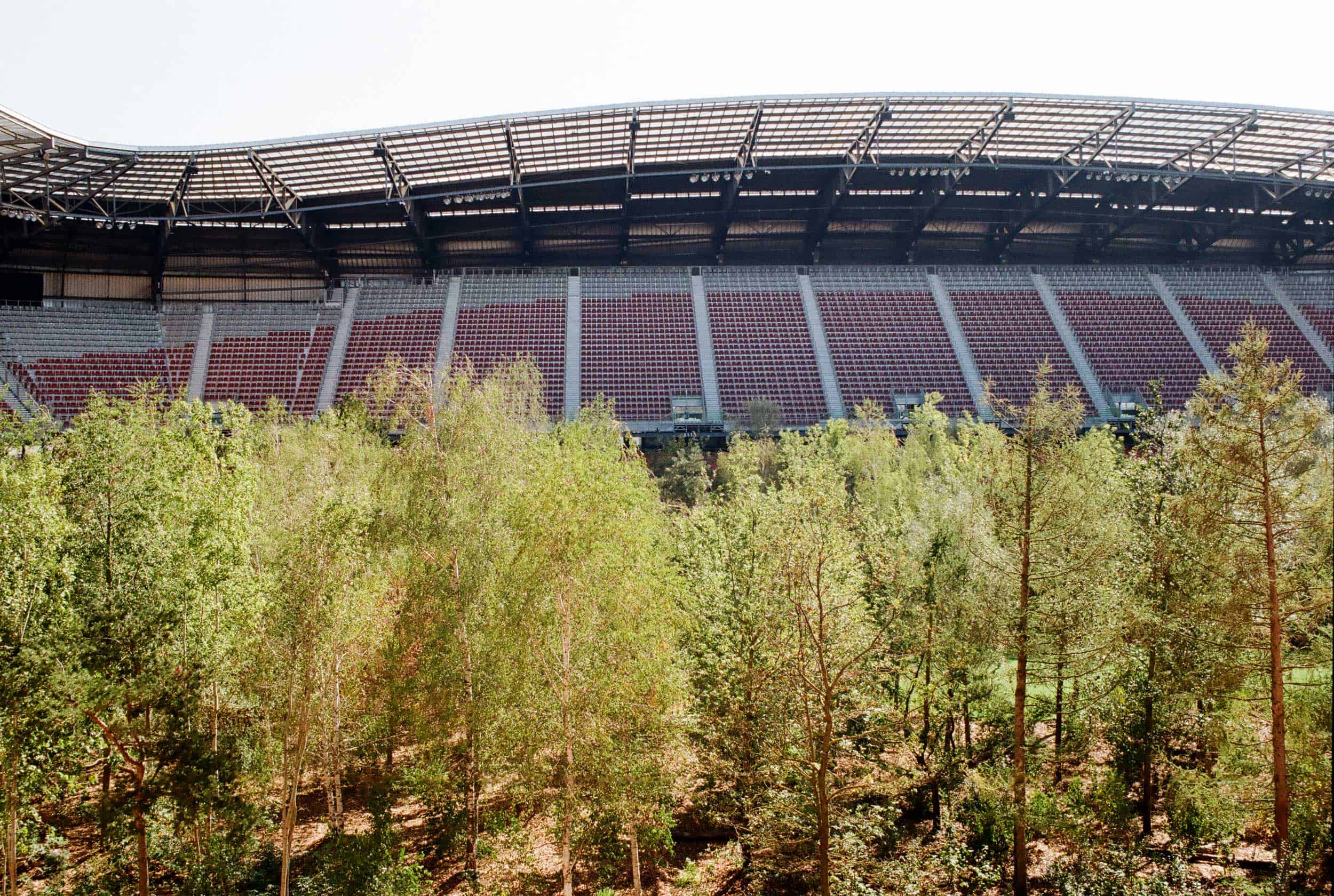
For Forest, Klagenfurt, Photo: Patrycja Głusiec
There are obviously groups which are against this art intervention, and this is not surprising, because what you can see in the stadium if you do not know how Littmann’s idea for the project originated and what his inspiration was is merely forest. The opposition is particularly strong among the fans of WAC football club, as they are currently not able to use the stadium that serves as a venue for the intervention. They have the right to be somehow embittered, although, as we found out, the stadium has not been fully utilized. Nevertheless, it seems that the city accepted the artist’s idea. The intervention itself attracts huge audience, particularly due to its grand scale and temporary character. Even Leonardo DiCaprio, who supports activities aimed at preserving the environment, was delighted with Littmann’s project. Therefore, we can conclude that the artist achieved his goal and his project became an impulse for discussion and deeper reflection.
Edited by Contemporary Lynx




